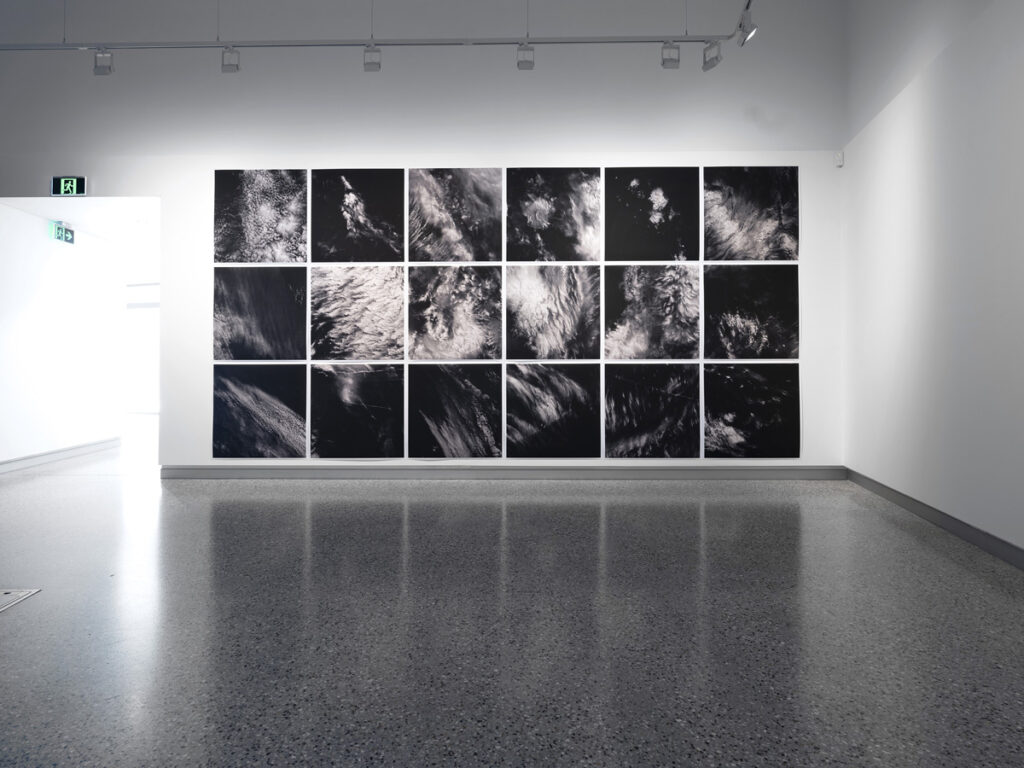Grayson Cooke.
Strange Weather
University of the Sunshine Coast Art Gallery
Artist Statement
The images shown here are derived from the “cirrus” band of the Landsat 8 satellite and show a series of cloud formations over the Great Australian Bight.
Satellite sensors are multi-spectral, recording discrete wavelength ranges of the electromagnetic spectrum in separate “bands” which are combined in different ways to highlight environmental phenomena.
In addition to bands for visible and infrared light, Landsat 8 records a single extremely narrow band in the shortwave infrared, 1.36-1.39 microns, designed solely to gather images of cirrus clouds. Cirrus are very high and very cold, and their thin wispy forms are often difficult to see and so constitute a form of noise in optical data; the cirrus band is recorded so it can be used for filtering and correcting for cloud noise.
In other words, Landsat 8 records images of cirrus clouds the world over, solely in order to remove them from the record. These stunning and dramatically lit confections of wispy clouds and towering thunderstorms are gathered for algorithmic purposes and are never meant to be seen by human eyes.
About the artists
Born in New Zealand and based in Australia, Grayson Cooke is an interdisciplinary scholar and media artist.
Grayson is an award-winning media artist whose work shows regularly in galleries and festivals around the world. Sitting at the intersection of art and science, much of his work uses satellite imaging and satellite data, as well as infrared imaging.
“Open Air”, a film made in collaboration with painter Emma Walker and the music of The Necks, won the 2020 Waterhouse Natural Science Art Prize. His collaboration with sound artist Mike Cooper, “Outback and Beyond”, was the winner of a “New Face” award in the 16th Japan Media Arts Festival in 2012. This work and others have been exhibited or performed at major festivals such as the WRO Media Art Biennale and the Imagine Science Film Festival in New York, and at key venues such as MONA in Hobart, the National Art Centre in Tokyo, and the National Taiwan Museum of Fine Arts.
As a scholar, he has published many articles in highly regarded media/technology journals including Leonardo, Convergence, Body and Society and Culture Machine. He writes on many topics including art/science, new media, live audio-visual performance and the archive. He holds a BA(HONS) from Victoria University of Wellington and an interdisciplinary PhD from Concordia University in Montreal
Credits: Grayson Cooke

